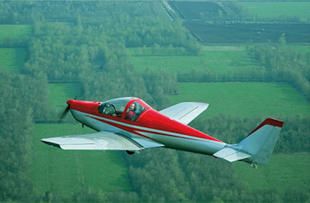 The European Union has given Polytechnic of Turin, Italy, and its 11 partners about $6 million to install fuel cells and electric motors in a variety of two-place aircraft to show it can be done. But the real goal is to develop a 12- to 15-passenger commuter aircraft powered by fuel cells. Hydrogen and fuel cell power technologies have now reached the point where they can [be] exploited to initiate a new era of propulsion systems for light aircraft and small commuter aircraft, says a report on the ENvironmentally Friendly Inter City Aircraft powered by Fuel Cells (ENFICA-FC) projects Web site. The initial goal is relatively modest. The two-place planes, equivalent to Light Sport aircraft in the U.S., will have an endurance goal of about an hour, enough to verify that the technology is viable. As fuel cell technology improves, so will that performance. The Europeans see a big market for fuel cell/electric commuter planes because of stringent noise standards at many of the smaller airports where they would land. The possibility to takeoff and land without contravening the noise abatement regulations set for small airfields, in urban areas and near population centres, will allow the use of these airfields during the late night hours when the noise abatement regulations are even more stringent, the Web site says. The news from Turin comes a couple of months after Boeing in Spain announced it was going to try flying a Diamond motor glider with a fuel cell/electric system. ENFICA-FC is also looking at using fuel cells to power onboard electrical systems. Boeing and Sandia National Laboratories are also investigating the use of fuel cells to power backup systems on aircraft.
The European Union has given Polytechnic of Turin, Italy, and its 11 partners about $6 million to install fuel cells and electric motors in a variety of two-place aircraft to show it can be done. But the real goal is to develop a 12- to 15-passenger commuter aircraft powered by fuel cells. Hydrogen and fuel cell power technologies have now reached the point where they can [be] exploited to initiate a new era of propulsion systems for light aircraft and small commuter aircraft, says a report on the ENvironmentally Friendly Inter City Aircraft powered by Fuel Cells (ENFICA-FC) projects Web site. The initial goal is relatively modest. The two-place planes, equivalent to Light Sport aircraft in the U.S., will have an endurance goal of about an hour, enough to verify that the technology is viable. As fuel cell technology improves, so will that performance. The Europeans see a big market for fuel cell/electric commuter planes because of stringent noise standards at many of the smaller airports where they would land. The possibility to takeoff and land without contravening the noise abatement regulations set for small airfields, in urban areas and near population centres, will allow the use of these airfields during the late night hours when the noise abatement regulations are even more stringent, the Web site says. The news from Turin comes a couple of months after Boeing in Spain announced it was going to try flying a Diamond motor glider with a fuel cell/electric system. ENFICA-FC is also looking at using fuel cells to power onboard electrical systems. Boeing and Sandia National Laboratories are also investigating the use of fuel cells to power backup systems on aircraft.


































